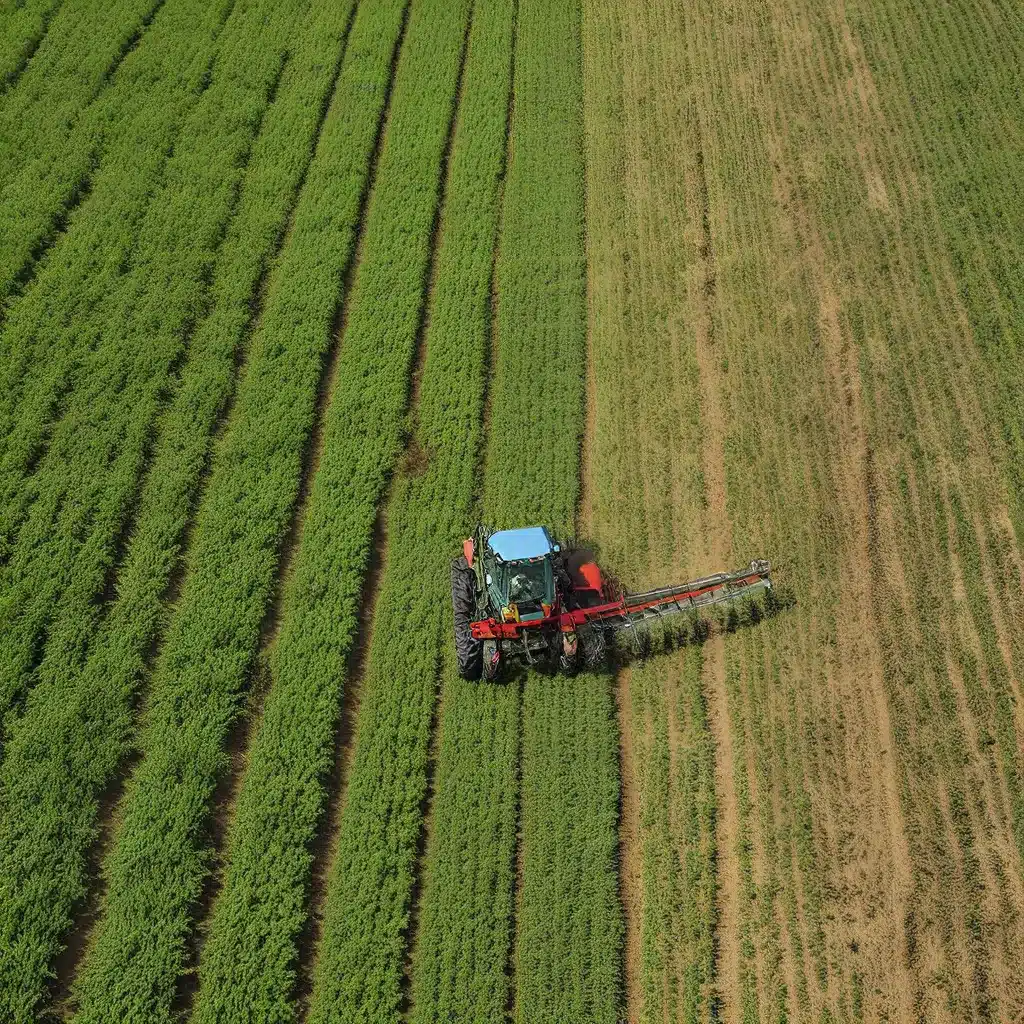
The Rise of Smart Farming and the IoT Revolution
The agriculture industry is facing increasing demands to be more sustainable and efficient as the global population continues to grow. Fortunately, technological advancements have provided a solution in the form of smart farming, a concept that harnesses the power of the Internet of Things (IoT) to optimize crop yields while conserving valuable resources.
At the heart of this precision agriculture revolution lies soil monitoring, a practice that involves measuring and analyzing critical soil parameters such as temperature and moisture content. IoT sensors have emerged as game-changers, enabling farmers to make data-driven decisions and implement targeted strategies for improved resource utilization and crop productivity.
The Pivotal Role of Soil Temperature and Moisture Sensors
The soil temperature and moisture sensor is a cutting-edge IoT device designed to accurately measure these two essential parameters that significantly impact plant growth, root development, and nutrient uptake. These sensors are often equipped with SDI-12 compatibility, a communication protocol widely used in the agricultural industry for seamless integration with existing monitoring systems.
By providing real-time data on soil conditions, these sensors empower farmers to optimize their farming practices, conserve resources, and promote sustainable agriculture. Let’s explore the key benefits and applications of this transformative technology:
Water Management and Irrigation Optimization
One of the core functions of the soil temperature and moisture sensor is to determine the moisture content in the soil accurately. This data is crucial for water management in agriculture, as it allows farmers to ensure that crops receive the right amount of water for optimal growth and health. By continuously monitoring soil moisture levels, farmers can avoid over-irrigation, which can lead to water wastage and potential damage to plants, as well as under-irrigation, which can cause drought stress and reduced crop yields. With precise water management based on real-time sensor data, farmers can conserve water resources and improve overall water use efficiency.
Nutrient Management in Hydroponic Systems
In addition to measuring soil moisture, the soil temperature and moisture sensor can also serve as an essential tool in determining the nutrient concentration in hydroponic systems. By measuring the electrical conductivity (EC) of the nutrient solution, the sensor provides valuable insights into the solution’s ability to conduct electricity, which is directly related to its nutrient content. This enables hydroponic farmers to fine-tune the nutrient solution, ensuring that it meets the specific needs of different plant varieties and growth stages. Precise nutrient control, facilitated by the sensor’s data, enhances plant health and overall productivity.
Optimal Growing Conditions through Temperature Monitoring
The sensor’s ability to measure soil temperature is equally important, as this parameter significantly influences seed germination, root development, nutrient availability, and microbial activity in the soil. By monitoring soil temperature, farmers can identify the best times for planting and adjust their schedules accordingly. Additionally, understanding soil temperature variations helps farmers implement strategies to create an optimal environment for crop growth, leading to improved crop performance and increased yields.
Early Detection of Crop Health Issues
The soil temperature and moisture sensor also aids in monitoring overall crop health, particularly in hydroponic systems. Any sudden changes in moisture levels, nutrient concentration, or temperature can indicate potential issues affecting plant health. The sensor’s continuous data collection and real-time alerts enable farmers to detect problems early and implement corrective actions promptly. By proactively addressing issues such as nutrient deficiencies, imbalances, or water-related problems, hydroponic farmers can prevent crop losses and maximize yield potential.
Driving Sustainable and Efficient Precision Agriculture
The soil temperature and moisture sensor plays a crucial role in promoting resource efficiency and targeted irrigation, ultimately contributing to reducing the environmental impact of agricultural practices. By providing real-time data on soil conditions, the sensor enables farmers to apply just the right amount of water and nutrients, minimizing over-irrigation, waterlogging, nutrient leaching, and soil degradation.
This data-driven precision approach not only conserves natural resources but also improves the overall sustainability of farming operations. As the global population continues to grow, the implementation of soil temperature and moisture sensors in smart farming systems becomes ever more essential to meet the demand for food while ensuring a sustainable future for agriculture.
Embracing the IoT Revolution in Agriculture
The soil temperature and moisture sensor is particularly popular among hi-tech farmers and greenhouse operators, who often grow high-value crops that demand meticulous care and monitoring. The sensor’s ability to provide real-time data on soil conditions, temperature, and moisture levels is invaluable in creating an optimal growing environment within controlled settings.
By using the sensor’s data to fine-tune irrigation, nutrient delivery, and temperature control, hi-tech farmers can achieve higher crop yields, better quality produce, and enhanced profitability. Hydroponic farming, a soilless cultivation method, heavily relies on nutrient solutions delivered directly to plant roots, making the monitoring of soil moisture and temperature even more critical. IoT sensors offer precise control over nutrient delivery, ensuring optimal conditions for plant growth in these specialized farming systems.
The Future of Smart Farming and the Path to Sustainability
As technology continues to advance, the future of agriculture lies in the hands of those who harness the power of data to feed the world. By embracing the potential of IoT soil monitoring systems, particularly soil temperature and moisture sensors, farmers can transform traditional farming into a data-driven, efficient, and sustainable practice.
From industrial-scale operations seeking to maximize crop yields to small-scale farmers striving for precision farming, the benefits of smart farming technology are undeniable. By adopting these cutting-edge solutions, farmers can pave the way for a greener, more productive tomorrow, where sustainable agriculture meets technological innovation.
Explore the latest advancements in sensor network technologies and discover how they are revolutionizing the agriculture industry, one field at a time.